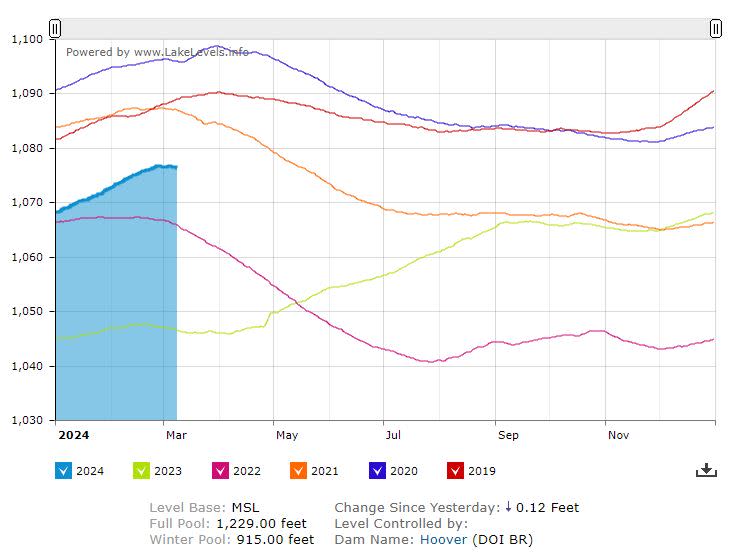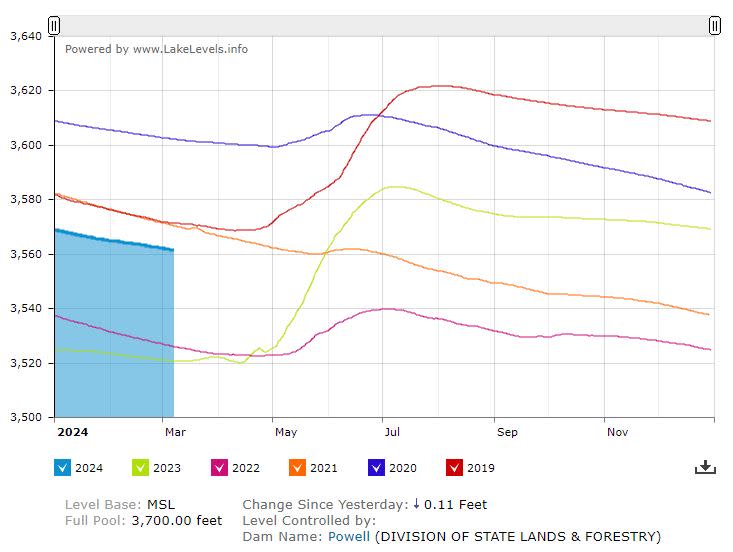Wave goodbye to 19 feet of water as Lake Mead begins 6-month drop

LAS VEGAS (KLAS) — Lake Mead has begun its slow decline, the start of an expected 19-foot drop over the next six months.
The U.S. Bureau of Reclamation’s website shows that Lake Mead has dropped every day since hitting 1,076.62 feet above sea level on Monday, March 4. It’s not a noticeable change right now — only about 3 inches of water by noon on Friday. The most recent projections show the level will drop to 1,057.50 feet in September.
That drop could once again expose boat wreckages and force changes in operations at marinas and boat ramps to adjust to the water level.

There will likely be fluctuations in the water level. Reclamation is expected to conduct “high-flow experiment” releases at Glen Canyon Dam in an effort to disrupt populations of predatory smallmouth bass — a non-native species that has made a home below the dam as waters have warmed. Those high-volume bursts of water also help to rebuild sand bars on the Colorado River. The extra water is enough to make Lake Mead’s level go up after the water travels the 280 miles to Lake Mead.
Last year, a big high-flow experiment release started on April 24, eventually raising Lake Mead’s level by 2 feet. It was just the start of a steady climb that restored 19 feet of water to the lake by September, thanks to a wet winter and snowpack levels that reached 160% of normal last year.
This year, snowpack levels are currently just above the 30-year average (105% today). Measurements taken on April 1 will give scientists a better idea of what to expect for summer runoff in the Upper Colorado River Basin.

Water releases have followed normal patterns at Glen Canyon Dam and Hoover Dam, although wet weather associated with Hurricane Hilary in August 2023 allowed Reclamation to hold back extra water as water demand dropped in Southern California.
Reclamation has been releasing water steadily from Lake Powell since early July, sending it down to Lake Mead. But that will start to change as Reclamation puts a priority on raising the level at Lake Powell as spring runoff begins.
Lake Powell is currently about 41 feet higher than last year, when Reclamation was scrambling to keep the water level up to avoid damaging hydropower infrastructure at Glen Canyon Dam.
For the latest news, weather, sports, and streaming video, head to KLAS.

